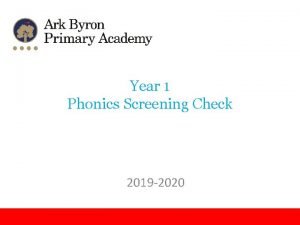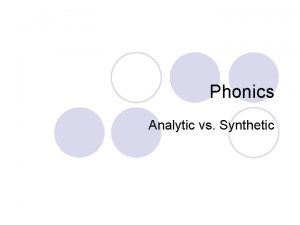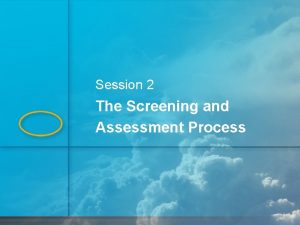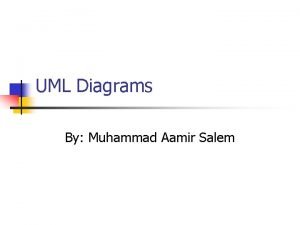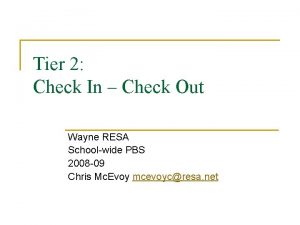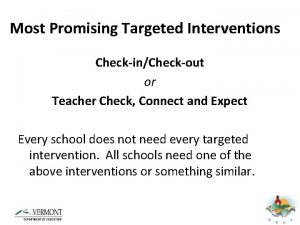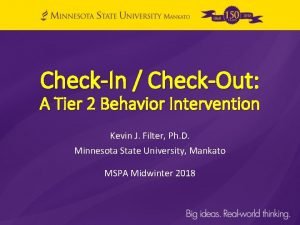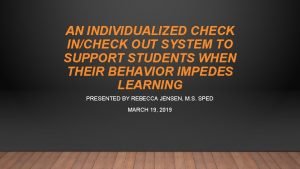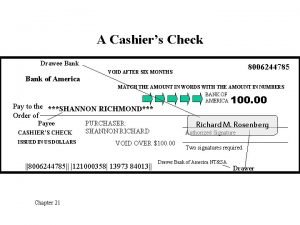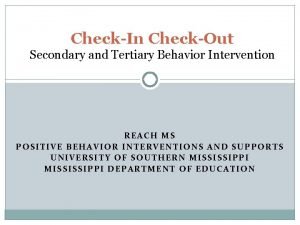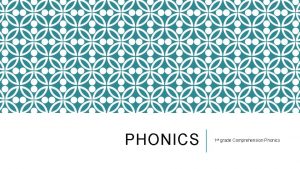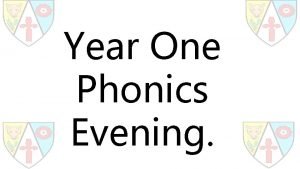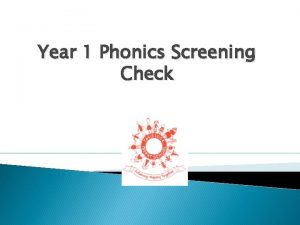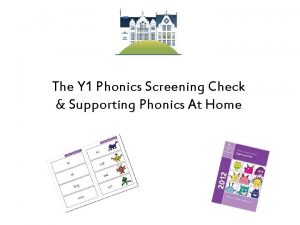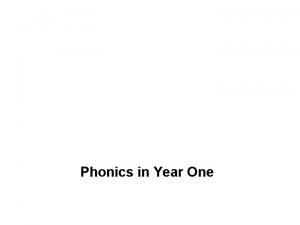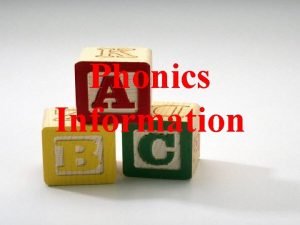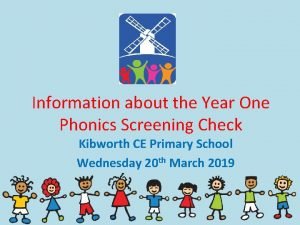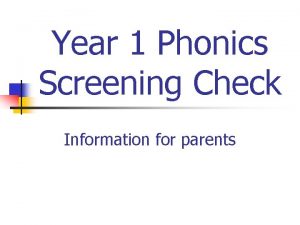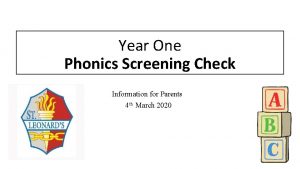YEAR 1 PHONICS SCREENING CHECK An Information Session













- Slides: 13

YEAR 1 PHONICS SCREENING CHECK An Information Session for Parents and Carers

What is phonics? • Phonics is a way of teaching children how to read quickly and skilfully. • Children are taught to read by breaking down words into separate sounds or ‘phonemes’. They are then taught how to blend these sounds together to read the whole word. • Children have a 20 minute phonics lesson each day and they are encouraged to use strategies learnt here to read and write in other contexts.

What is the Phonics Screening Check? • Statutory assessment for all children in Year 1. • Designed to assess whether children have learnt to use their phonic skills to decode (sound out and blend) words to an appropriate standard. • It helps the school to confirm whether each child has made the expected progress. • This ‘midpoint check’ will ensure that we have a clear understanding of what each child needs to learn in Year 2.

When and how will the Screening Check take place? • The screening will take place throughout the week beginning Monday 15 th June 2015. • The check normally takes between 5 and 10 minutes to complete however there is no time limit. If your child is struggling, the teacher will stop the check. The check is carefully designed not to be in any way stressful for your child. • Mrs Murrell will complete the check with each child one at a time in a quiet area of the school.

What will the children be expected to do? • The check is made up of two sections, with 20 words in each section. Words are a mixture of real words and nonsense words. • Your child may have read some of the words before, while others will be completely new. They will sound out and read the words one to one with the teacher who will record whether the response to each word is correct or incorrect. • The check is very similar to tasks the children already complete during phonics lessons.

Why use nonsense words? • Your child will be told before the check that there will be nonsense words that he or she will have not seen before. The children will be familiar with this because we already regularly use nonsense words in our phonics teaching. • Nonsense words are important to include because they provide an opportunity to assess children’s phonic knowledge in isolation. Children have to use their decoding skills without the input of their memory of familiar words. • All nonsense words are accompanied with a picture of an imaginary creature to provide a context for the pupil.

Section 1 of the Screening Check • 12 nonsense words and 8 real words • Will contain the phonemes (sounds) and graphemes (letter shapes) first introduced to children. • Words with a variety of simple word structures • cvc, vcc, ccvc, cvcc • usingle letters - a, b, c, d, e, f, g, h, i, j, k, l, m, n, o, p, qu, r, s, t, u, v, w, x, y, z • some consonant digraphs - ch, ck, ff, ll, ng, sh, ss, th, zz • frequent and consistent vowel digraphs - ar, ee, oi, oo, or

Examples of Section 1 words How would you decode these words? tox geck blan shin grit bim chom steck gang start vap tord hild week best ulf thazz quemp chill hooks

Section 2 of the Screening Check • 8 Nonsense Words and 12 Real Words • A variety of words with more complex word structures • ccvcc, cccvcc and two-syllable words • some additional consonant digraphs - ph, wh • some less frequent and consistent vowel digraphs, including split digraphs - a-e, ai, au, aw, ay, ea, e-e, er, ew, i-e, ir, oa, o-e, ou, ow, oy, ue, u-e, ur • trigraphs - air, igh

How will the results of the check be used? • Results have to be submitted to the Local Authority. • Parents will be informed of their own child’s results by the end of the Summer Term. • School will use the results to identify children who will need further support in Year 2. • Children identified as needing further support will then be re -screened in the following June.

What are we doing at school? • Daily phonics sessions – introducing, practising and applying new phonemes and alternative pronunciations • Phonic-based home and school reading books • Guided reading including phonic based games, stories and activities • Extra phonic support in small groups

How can you help? • • • Parents play a key role in helping with this Practise reading words including real and non-words. Encourage your child to sound out words from left to right rather than looking at pictures to guess the words. Try to make time to read with your child every day. Grandparents and older brothers and sisters can help too. Games like ‘I Spy’ can also be an enjoyable way of teaching children about sounds and letters. Children can practise their phonics by playing games online. Pack to take home.

Any questions…
 Phonics screening 2019
Phonics screening 2019 Analytic phonics
Analytic phonics Screening session
Screening session Use case engineering
Use case engineering Class diagram for airport check-in and security screening
Class diagram for airport check-in and security screening Brigance screen iii 3 year old data sheet
Brigance screen iii 3 year old data sheet Year up info session
Year up info session Behavior check in check out sheet
Behavior check in check out sheet Behavior check in check out sheet
Behavior check in check out sheet Check in check out
Check in check out Check in check out system
Check in check out system Cashiers check bank of america
Cashiers check bank of america Polygonal check and raster scan check are types of
Polygonal check and raster scan check are types of Check in checkout
Check in checkout
